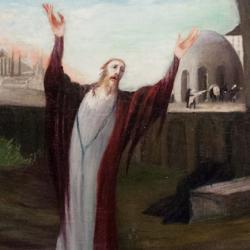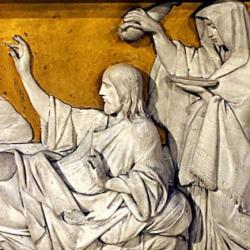David Moffitt argues in the current issue of JBL (125:2) that “Matthew alludes to Lamentations three times in chs. 23 and 28 of his Gospel (23:35; 27:34; and 27:39). The fact that these allusions come from chs. 2, 3, and 4 of Lamentations, that the allusion to Lam 4:13 resonates throughout the scenes that immediately precede the crucifixion (see Matt 27:19, 24-25), and that the allusion to Lam 2:15 is so closely related thematically to the way Matthew uses Lam 4:13, all suggest that Matthew has employed Lamentations as a significant intertext. The allusions to Lamentations function as scriptual warrant for interpreting certain historical events theologically and polemically – namely, for understanding Jesus’ crucifixion as the act of righteous bloodshed par excellence that directly results in the destruction of Jerusalem and the temple.” He suggests that Matthew’s use of Lamentations shows he intended his work as a “prophetic word” and was not indulging anti-Jewish bias.
Three comments. First, Moffitt is right that Lamentations plays a role here – the Jews wag their heads at the cross as they wag them at the destroyed city in Lamentations, which suggests that Jesus is not simply the Righteous Sufferer, but somehow the embodiment of the city itself.
Second, I’d want to integrate Revelation into the mix, where the destruction of the city is God’s response to the blood of the saints mingled with the blood of Jesus. Jesus sheds His innocent blood, but that does not alone bring the catastrophe of Jerusalem; it comes when
“all the righteous blood from Abel to Zechariah” and beyond is mixed in.
Third, Moffitt’s argument fits neatly with an early dating of Matthew. If he wrote (sometime) before AD 70, then his Gospel could truly be the prophetic word, and the crucifixion account would imply a warning to any Jews who might read the gospel.















